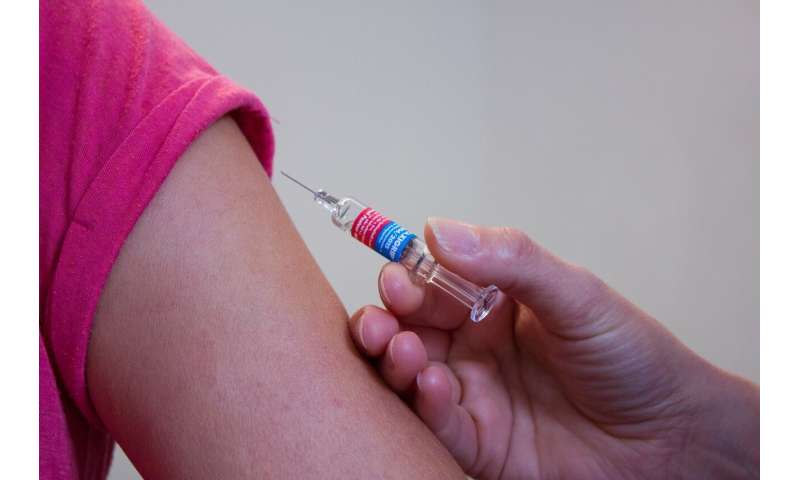Zoster vaccine recommended for people with inflammatory RMD

Herpes zoster (HZ) is common in older people, with a lifetime risk of 25%. The main risk factors are advanced age and immunosuppression. People with a rheumatic and musculoskeletal disease have an overall higher risk of shingles.
EULAR—The European Alliance of Associations for Rheumatology—recommends that HZ vaccination be considered in high-risk patients with an autoimmune and inflammatory RMD. Live vaccines are difficult in patients on immunosuppressive therapies; newer non-live vaccines may replace the live-attenuated version, but when the last recommendations were developed, the safety and efficacy of the subunit zoster vaccine had not yet been investigated in patients with RMD.
New work presented at the 2025 annual EULAR congress in Barcelona focuses on the recombinant zoster vaccine (RZV), which contains recombinant glycoprotein E—the major target of CD4+T-cells. The abstract describes the tolerability and safety of RZV in patients with inflammatory rheumatic and musculoskeletal diseases (iRMD), showcasing interim data from an ongoing study.
In total, 150 adults with rheumatoid arthritis (RA), axial spondyloarthritis (axSpA), or giant cell arteritis (GCA) who had an indication of receiving RZV were prospectively included. Of these, 21.3% had a history of HZ, and everyone received RZV at Month 0; 90% also received a dose at Month 2. Safety assessments were performed at Months 2, 3, 6, and 12.
Most adverse events (AE) occurred within a few days after vaccination. In total, 139 (46.8%) localized and 158 (53.2%) generalized AE occurred up to Month 3. At that point, pain at the site of injection was the most frequent AE, reported by 32.7% of patients. This was followed by fever (14.1%), fatigue (9.4%), musculoskeletal pain (8.1%), swelling at the injection site (6.4%) and redness at the injection site (6.4%). Infections (4.7%), worsening of the disease (3.7%) and other AEs (7.7%) were reported until Month 3.
Disease flares were reported by patients at Months 2, 3, 6 and 12, but of these only 1.6–8.6% fulfilled the predefined flare criteria. Hospitalization due to disease flare was needed for 3 patients—2 with GCA and 1 with RA. Lead author Uta Kiltz said "over the observed period of 12 months, this can be interpreted as a low rate of events."
Overall, 10 serious AEs were reported in 9 patients during follow-up (3 flares, 4 malignancies, and 3 comorbidities), but no patient reported an AE of special interest or a breakthrough infection. Of note, the malignancies were considered not to be related to the vaccination.
The authors concluded that the majority of patients tolerated RZV well, with only a few reports of flares and serious AEs. These findings are reassuring for rheumatologists and future vaccine recipients, and support confidence in RZV safety for patients with an iRMD.
More information:
Kiltz U, et al. Tolerability and safety of recombinant zoster vaccine in patients with inflammatory rheumatic musculoskeletal diseases—a prospective longitudinal study over 12 months. Presented at EULAR 2025; OP0034. Ann Rheum Dis 2025; DOI: 10.1136/annrheumdis-2025-eular.B293.
Provided by European Alliance of Associations for Rheumatology (EULAR)